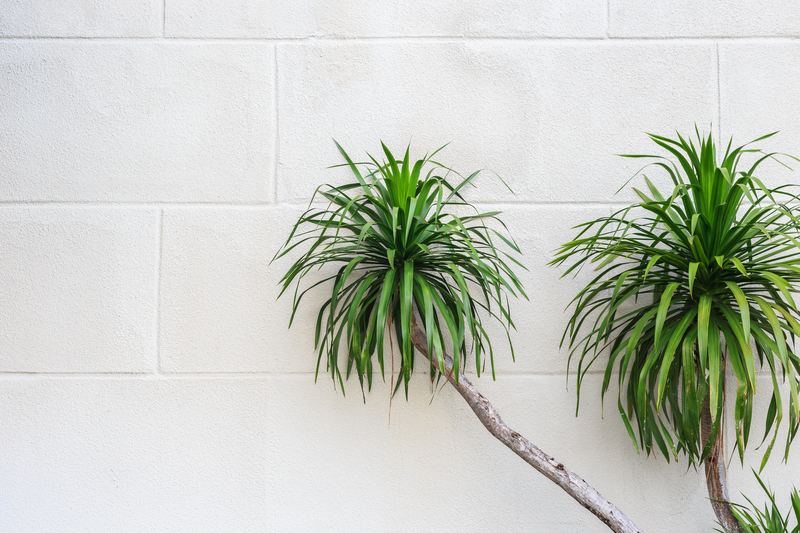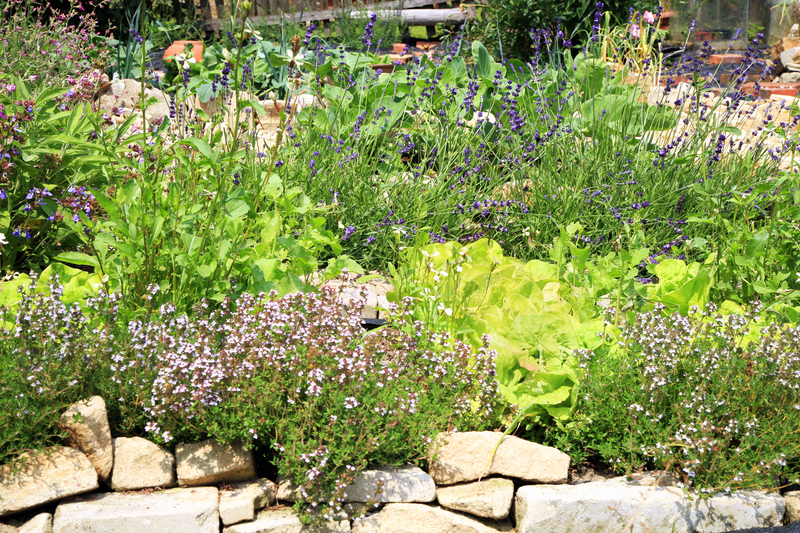Harsh Climate Survival Strategies for Your Garden
Posted on 21/05/2025
Harsh Climate Survival Strategies for Your Garden
Adapting your garden to extreme weather conditions can be challenging, whether you're dealing with scorching heat, bone-chilling cold, relentless droughts, or heavy rainfall. If you want your green space to thrive, it's crucial to adopt effective harsh climate survival strategies for your garden. This comprehensive guide will explore actionable survival techniques, best practices, and plant choices to ensure your garden flourishes no matter what Mother Nature throws your way.

Understanding Your Local Climate
Before you start implementing survival strategies, it's vital to understand your specific climatic conditions. Do you experience frequent droughts, severe frosts, strong winds, or intense heatwaves? Knowing your USDA hardiness zone or regional climate classification allows you to tailor your yard's resilience strategies optimally.
- Research historical weather patterns in your area.
- Track rainfall, temperatures, and wind speed over multiple seasons.
- Observe your microclimate, noting spots that are hotter, cooler, wetter, or drier than the rest.
Tip: Microclimates--such as shady corners, heat-retaining walls, or wind-exposed areas--may require special attention when planning your garden layout!
Planning a Resilient Garden Layout
Choose the Right Plant Species
Survival in harsh conditions starts with plant selection. Opt for species that are natively adapted or proven to withstand your region's extremes.
- Heat and Drought: Succulents, lavender, yarrow, and ornamental grasses are water-wise and heat-tolerant.
- Cold and Frost: Choose varieties like Siberian iris, peonies, and conifers which can tolerate freezing temperatures.
- Wind or Salt Spray: Rugosa roses and sea thrift are robust plants for windy or coastal gardens.
- Heavy Rain: Ferns, daylilies, and astilbe can thrive in waterlogged conditions.
Design with Harsh Weather in Mind
- Position vulnerable plants in protected spots, such as near fences or walls.
- Use windbreaks like dense hedges or trellis screens to shelter sensitive plants.
- Raise garden beds in flood-prone areas to improve drainage.
Pro Tip: Group plants with similar water, light, and care needs – this makes maintenance easier and increases plant survival during extreme weather events.
Soil Management: The Foundation of Harsh Climate Gardening
Improve Soil for Moisture Efficiency
Healthy soil is a garden's most important asset--especially under severe climate stress. Use these strategies for building soil resilience to weather extremes:
- Mulch generously: Organic mulch helps regulate temperature, conserve moisture, and shield roots from frost and sun.
- Add compost: Enriching soil with compost improves its water-holding capacity and fertility.
- Test and amend: Regularly check pH and nutrients to correct deficiencies, address salinity, or balance heavy clays and sandy soils.
Soil Protection in All Seasons
- Cover bare earth to prevent erosion, compaction, and nutrient loss from wind or rain.
- Plant cover crops like clover or vetch to add organic matter and suppress weeds.
Emphasize soil health: healthy soil supports strong root systems, giving your plants the best chance to survive harsh climates.
Efficient Watering Strategies for Survival
Water-Wise Gardening Techniques
- Drip irrigation: Install drip lines or soaker hoses to deliver water right to the roots with minimal waste.
- Water early or late: Water in the early morning or evening to reduce evaporation.
- Deep, less frequent watering: Encourage roots to grow deep and access moisture below the surface.
- Collect rainwater: Use barrels to store rainwater for drier times, decreasing reliance on municipal sources.
Drought-Proofing Tactics
- Hydrozone planting: Group drought-tolerant plants together and give thirstier ones their own spot closer to the water source.
- Reduce lawn areas: Lawns require significant water, so replace sections with gravel, mulch, or groundcovers.
Fun Fact: Drip irrigation can cut water usage by as much as 70% compared to traditional sprinklers and hoses!
Temperature Extremes: Protecting Your Garden Year-Round
Defending Against Heatwaves
- Shade structures: Offer temporary relief with shade cloth, pergolas, or row covers over delicate veggies and flowers.
- Reflective mulches: Use straw or light-colored mulch to keep soil cooler and reduce heat stress.
- Avoid fertilizing mid-summer: High heat can burn roots and leaves if fertilizer is applied at the wrong time.
Withstanding Freezing Winters
- Insulate root zones: Apply thick layers of mulch or straw before frosts hit.
- Cover with fleece or cloches: Protect tender plants from unexpected cold snaps.
- Water before a freeze: Moist soil retains heat better than dry soil, helping roots survive the cold.
Note: Regularly check weather forecasts and be prepared to deploy covers or move potted plants indoors as needed.
Wind and Storm Mitigation Strategies
Building Physical Barriers
- Plant windbreaks: Evergreens or dense shrubs can buffer high winds, reducing desiccation and damage.
- Stabilize tall plants: Stake tomatoes, sunflowers, and saplings to prevent wind throw.
- Install fencing or netting: Temporary mesh can shelter delicate crops during severe storms.
Stormwater Management
- Create swales: Ditches or contours slow runoff, letting water sink slowly into the soil instead of pooling or eroding land.
- Rain gardens: Plant low-lying species such as rushes and sedges in natural depressions to absorb excess water.
Expert Insight: Multi-layered plantings – canopy trees, shrubs, groundcovers – break up wind, catch moisture, and anchor soil, providing vital garden stability in harsh climates.
Choosing the Best Plants for Adverse Conditions
Reliable Drought-Tolerant Choices
- Sedums and succulents: Low-maintenance and thrive on minimal water.
- Native wildflowers: Adapted to your area's natural rainfall and heat.
- Ornamental grasses: Resilient, attractive, and often require little supplemental care once established.
Cold-Hardy and Frost-Tolerant Varieties
- Hostas: Excellent for shady, chilly corners.
- Evergreen conifers: Add winter interest and structure.
- Spring-flowering bulbs: Many bulbs, like tulips and daffodils, need a period of winter chill to thrive.
Plants for Windy or Exposed Sites
- Junipers: Tough evergreens with good wind resistance.
- Sea thrift: Natural for breezy, sandy locations.
- Spartina and Festuca grasses: Hold soil and sway with the wind rather than break.
Mix and match plants that suit both your climate challenges and style preferences for a uniquely beautiful, resilient garden.
Maintenance Tips: Keeping Your Garden Resilient Long-Term
- Monitor plant health regularly and remove diseased or dead material promptly.
- Prune strategically: Cut back damaged branches to encourage new growth after heat, cold, or storm events.
- Feed soil life: Top up mulch and compost each season to support beneficial soil organisms.
- Stay alert to weather changes and be prepared to act quickly with covers, extra water, or shade as needed.
Remember: Gardens are dynamic systems – regular maintenance and observation are key parts of any garden survival strategy for harsh climates.
Smart Gardening Tools and Technology for Climate Survival
- Soil moisture sensors help prevent overwatering or drought stress.
- Mobile weather apps alert you to frost warnings, heatwaves, or storms.
- Automatic timers and irrigation valves ensure consistent watering, even if you're away.
- Thermometers and humidity gauges offer valuable insight for fine-tuning garden care.

Embracing Sustainable Gardening Practices
- Practice water conservation: Mulch, rainwater harvesting, and drought-tolerant plants reduce your ecological footprint.
- Compost and recycle: Divert green waste into rich soil amendments, strengthening your climate resilience.
- Encourage biodiversity: Native pollinator-friendly plants, low-impact pest control, and companion planting all bolster ecological health.
Final Thoughts: Growing Strong in Every Season
Harsh climate gardening is as much about proactive preparation as reactive protection. By selecting the right plants, building healthy soils, managing water and shelter, and staying alert to your garden's needs, you can create a thriving landscape that weathers every storm—or drought—with resilience and beauty.
Ready to get started? Apply these harsh garden climate survival strategies and turn your outdoor space into an oasis--no matter what kind of climate you face!
- Observe and adapt: Nature is constantly changing. Remain flexible in your garden plans and don't be afraid to experiment with new techniques or plant types.
- Connect with local gardeners: Often, community gardeners or extension agents have valuable wisdom about surviving your area's specific climate quirks.
- Celebrate small victories! Every flower that blooms or vegetable harvested in a tough season is proof of your growing skill and resilience.
With knowledge, creativity, and perseverance, your garden can not only survive but thrive in even the harshest climates. Happy gardening!

